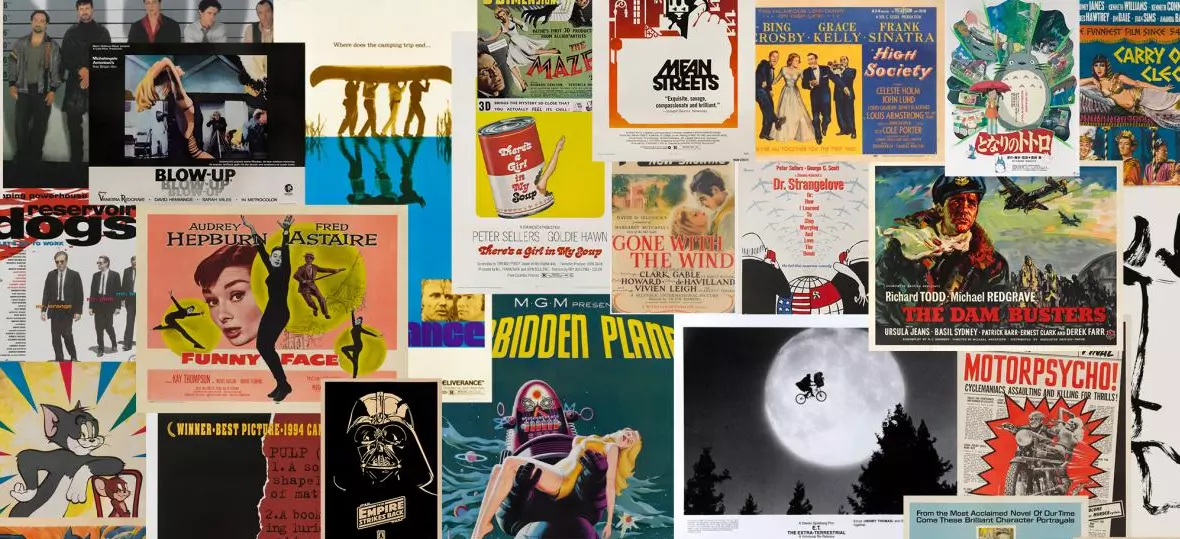What were the trends in the 1950s? Find out more about the post-war world of the 1950s and the popular trends which emerged in this generation.
Trends from the Fifties
As with any dramatic change in society, the Post-war world of the 1950s generated several fresh and intriguing trends that aimed to revolt against everything that had come before.
Everything from popular fashion to entertainment and leisure was altered for a new generation. Here is a selection of some of the more interesting trends that emerged in the "Fabulous Fifties":
Hanging out in diners around the soda fountains became the number one pass time for many teenagers during the 1950s. Put a dance floor area and a jukebox in the corner, and teenagers would come flocking to hang out together.
Innovations on the fashion front were plentiful during the 50s, with one of the most recognisable being the Poodle Skirt. Often brightly coloured or patterned, with a great billowing shape, this skirt was a popular style that many women of the decade wore.
The name originated from the fact that early appearances of the skirt had images of poodles appliquéd onto the felt fabric.
Everyone has attended a dance or disco while at school, but for teenagers in the 50s, these high school dances transformed into things known as "Sock Hops".
To protect the gymnasium floors of their schools, teenagers would remove their shoes and dance in their socks. Combined with the new, raucous Rock n Roll music they all loved, this led to new forms of dancing, often imitated from the T.V. show "American Bandstand".
The conical bra was one of the more interesting fashion innovations after World War II. As a forerunner to the sexual liberation of the 1960s, these cone-shaped bras were also known as "bullet bras" or "torpedos" due to their eye-catching shape.
Pick any fashion from any era, and the chances are you'll find many men with interesting facial hair. For the 1950s, this facial hair revolution evolved into a freshly shaven chin, but with some impressive sideburns to frame it all in.
Stars like Elvis Presley were known to sport a pair, usually worn an inch or two below the ears.
While they were first invented during the 1930s, drive-in theatres became truly popular during the 50s. Teenagers and adults enjoyed the vast amount of films coming out of Hollywood in what are essentially car parks with a giant projector screen in them.
Yet another interesting fashion innovation, the coonskin cap, became popular during the 50s thanks to Fess Parker. The actor played David Crocket in a miniseries from Disney in 1954, sparking a craze that saw $100,000,000 worth of the caps sold.
Everyone has had a go with a hula hoop at one point or another. But that wasn't always the case. It wasn't until the 50s that the popular toy was invented, becoming the hit fad of its day. Think of skateboards in the 70s and 80s for similar popularity.
With the majority of 50s popular culture being popularised by teenagers, the Letterman Jacket was a natural piece of essential fashion. The pride and joy of many a high school sports star.
Not only were they popular with boys, but girls could also be found wearing their beau's favourite Letterman Jackets around the school corridors.
The first 3-D films hit screens all the way back in the 1950s. Watched similarly today, with a pair of goofy-looking specs, Bwana Devil was the first to wow audiences with its technical prowess.
3-D effects are still just as popular for modern audiences, drawing in crowds of those who can't get enough of the eye-popping effects.
Some of these trends have stood the test of time and continue to be popular today. From 3-D effects to timeless fashions and contemporary styles, the 50s really produced some of the more long-lasting trends.
These trends keep returning to us now and then, which is a testament to the visionary nature of those living through the era. The rest of this article will dive deeper into some of these trends, looking to see why the 1950s was such an iconic time.
1950s Fashions
From sideburns, blue jeans and leather jackets to Dirndl dresses and ponytails, both women's and men's fashion became truly iconic and defined the time period during the 1950s. While many era-defining fashions are usually dictated by what teenagers wear, what about adults? Just as the fashion of the day was changing for young people, so too was it moving in different ways for grown-ups.
The Post-World War II era was different from anything that came before. Therefore, while you may have seen quite a few different stylistic choices in your family photographs from the era or in the movies they used to watch, some common themes can be found amongst the noise.
What Inspired 1950s Styles?
Before diving into what was different about 1950s fashion trends, it is important to discuss where these style influences came from. After the chaos and devastation of the Second World War, many countries were busy rebuilding what they had lost.
Luckily for the United States, their country had remained relatively untouched by the war and was in a better place to bounce back to prominence.
With soldiers returning from Europe and the Pacific, plenty of workers took the roles women had filled in all the major industries.
With all these new consumers back in gainful employment and a booming economy, the U.S. Government promoted a greater sense of consumerism than ever before.
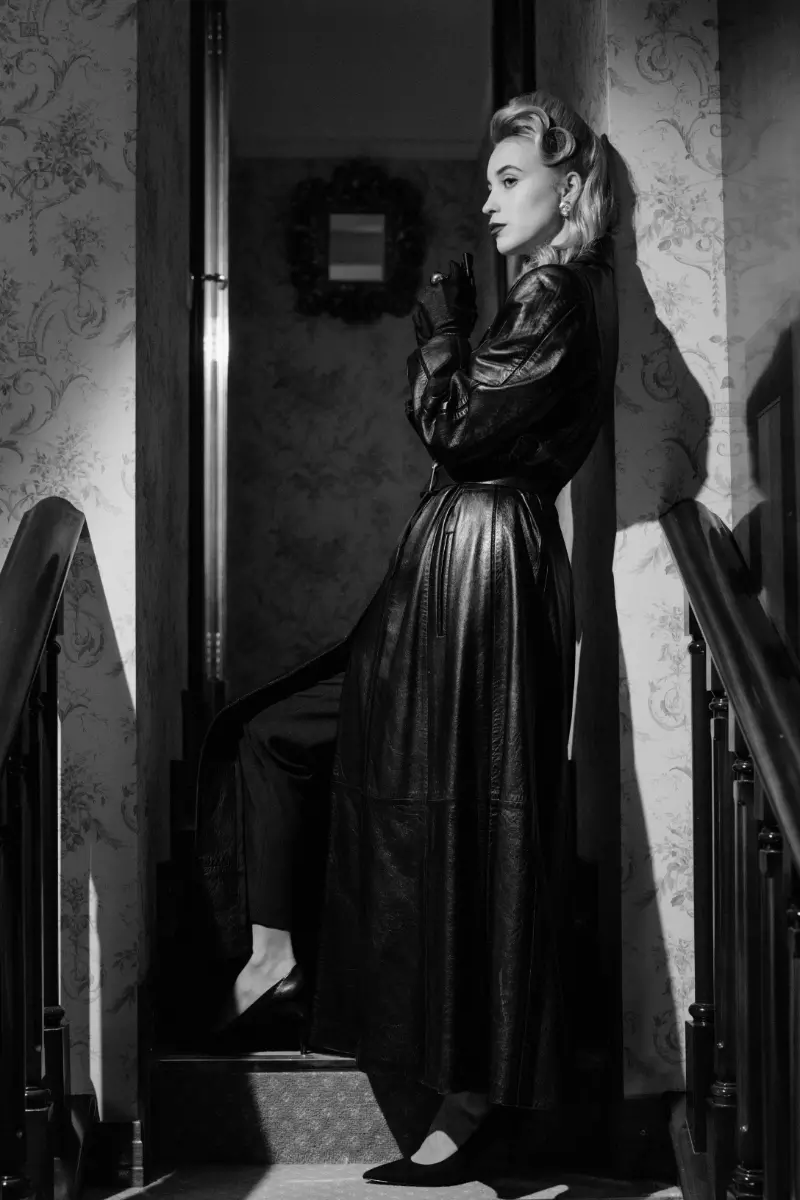
They believed encouraging the American people to buy more than they ever had before was the best way to shore up their economy. But, because of this demand, the American markets needed more consumer goods than ever before, which meant they needed more designers.
These designers included some of the most famous couturiers and fashion houses in Europe, particularly in Paris, which had been the fashion capital of the western world for decades. With so many designers to choose from, the variety of clothes people could buy became incredibly diverse. Synthetic fabrics were also developed to keep up with demand and mass-production, while movie stars and fashion icons promoted different styles for both men and women.
Women's 1950s Fashion Style
Women's Dresses
One of the biggest names in women's fashion going into the 1950s was Christian Dior, who envisioned a "New Look" for women that was truly iconic. His dresses displayed cinched waistlines, prominent hips, full skirts and rounded shoulders. Dior's vision saw an end to the thrift of wartime rationing and a move towards a stylish celebration of femininity.
His ideas were echoed in many mass-produced dresses, from crinoline circle skirts to coatdresses, cocktail dresses, sheath dresses formal evening dresses. But Christian Dior's ideal silhouette wasn't the only one women favoured. Pencil dresses and figure-hugging garments were also increasingly popular going into the 1950s.
Pencil skirts were often experimented with, pairing them with short jackets, fitted blouses or tight sweaters. Other designs sought to move the waistline or loosen it, such as the sack dress, bell skirts and A-line dresses, or experiment with puffed sleeves. These looks were immortalised by stars of the day, such as Elizabeth Taylor, Marilyn Monroe and others.
These looks took off and became worldwide phenomena, showing that western fashion sense wasn't just popular at home but abroad too. Dior's New Look was particularly popular in the newly formed West Germany, while the thinner pencil skirt motif was increasingly popular in Australia and the far east.
Fashion shows as far in the East as Japan showed models in dresses, taking a great heap of inspiration from what was happening in London and Paris during the 1950s.
Women's Casual Clothing
Casual clothing for women also became increasingly popular during the 50s. However, it was designers in the U.S. that perfected the combination of practicality, comfort and style. Playsuits, sportswear and fashionable trousers were all available for busy, fashion-conscious women.
One of the icons of this particular style was Audrey Hepburn. The Hollywood legend perfected casual chic looks, often known to wear slacks or slim, dark-coloured trousers, boat-necked tops and flat shoes or pumps. Taking inspiration from the Beat Generation in the literary world, the "Beatnik" style also influenced women's casual clothing, affecting their appearances in sometimes dramatic ways.
Both Beatnik dresses and trousers were crisp and slim-fitting. They were often worn in dark colours, though they could be accented with bohemian designs or flourishes. Jumpers and berets were also very common.
Women's Shoes and Accessories
The great diversity and range of options for women's shoes we see today has its origins in the 1950s. Many new styles of women's shoes emerged, offering greater comfort in lightweight and beautiful designs. From flat and closed-toe pumps to stiletto heels, wedges and sandals, there were countless shoe styles for women in the 50s to choose from.
Each was also available in a range of solid bold colours or prints. Hats were always popular in previous decades and continued to be so in the 1950s. However, the variety grew to encompass pillboxes, Juliette caps, flat pancake hats, veiled fascinators and straw hats with large brims. Alternative headwear included coloured scarves tied over the top of the head.
Of course, no outfit would have been complete without coordinated gloves, jewellery, handbags or clutch purses.
Men's 1950s Fashion
Alongside women's fashion moving to more casual styles, men's fashion also moved in a similar direction.
In the early years of the decade, men typically wore baggy grey flannel suits in other neutral hues with slim ties and matching jackets.
But as the 50s progressed, men's clothes began to incorporate more colour, texture and a casual aesthetic.
Light sports coats with colourful shirts and fashionable trousers were a popular combination.
Knee-length shorts and flowery Hawaiian shirts were also a good choice during the summer. Men's shoes were much more practical than women's and therefore offered slightly less in terms of choice.
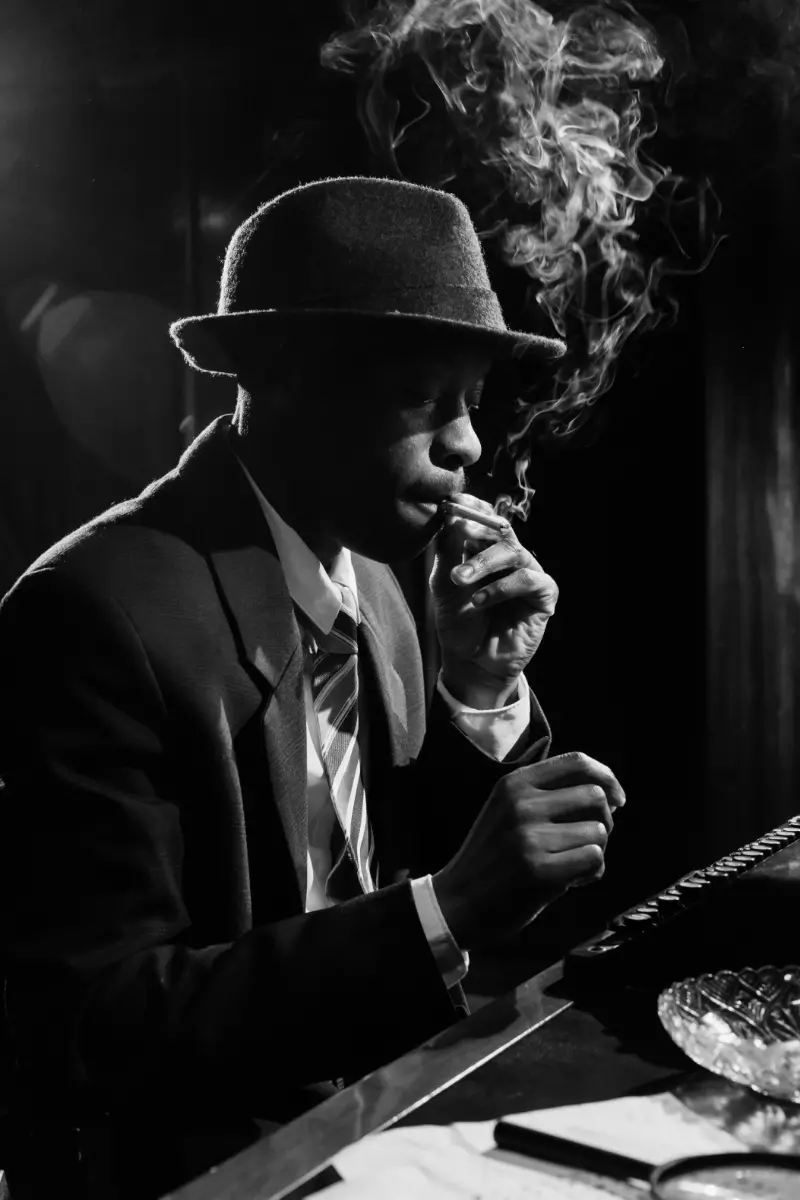
Oxford wingtips, brogues or other dress shoes continued to be worn by men in the 50s for formal suit pairings, often in black or brown leather. Other men's shoe styles included penny loafers, sandals or saddle shoes for a more casual look.
1950s Youth and Teens Fashions
The fashion of younger people and teenagers was a deliberate rebellion against the stuffiness of the fashion their parents wore. In the U.K., this led to the first youth subculture of the day - the Teddy Boys. Aiming for a stylised version of older Edwardian (hence Teddy) fashion, young men wore long frock coats with velvet collars, plumb straight stovepipe trousers, white shirts, colourful socks and suede brothel-creeper shoes.
Hairstyles for young men and teenagers in the 1950s all had one thing in common - they were all slicked back. Film stars like Marlon Brando in the Wild One and James Dean epitomised this style of young working-class men, pairing it with blue jeans, white shirts and the former's iconic fitted red jacket from Rebel Without a Cause.
Young women and teenage girls wore styles a little closer to their parents' fashion sense but chose a more youthful version of what their mothers were wearing. Fitted blouses tucked into cinch belts, wide skirts, or pencil skirts were popular combinations. Poodle skirts were also a common sight, so named because of the poodle designs often seen on the wide-flowing fabric. Fitted jumpers or cardigans might be worn over the blouse, with knotted scarves acting as an accessory, while white bobby socks and saddle shoes were all the rage.
1950s Architecture
While fashion is one of the main things, we remember the 1950s for, changes of style in other areas were just as visionary during this decade. Architecture is one area in which we find a great deal of innovation, particularly in the United States.
World-renowned architects such as Frank Lloyd Wright, Ludwig Mies van der Rohe, Eero Saarinen, Walter Gropius and many more were busy changing the landscape of the U.S. in its towns and cities.
Van der Rohe and Lloyd Wright were two of the most notable architects of the 50s, with the latter being one of the 20th-century's leading visionaries.
He designed the innovative Price Tower in Oklahoma and the famous Guggenheim Museum in New York City, showing off a dramatically new way to use space and design an urban environment.
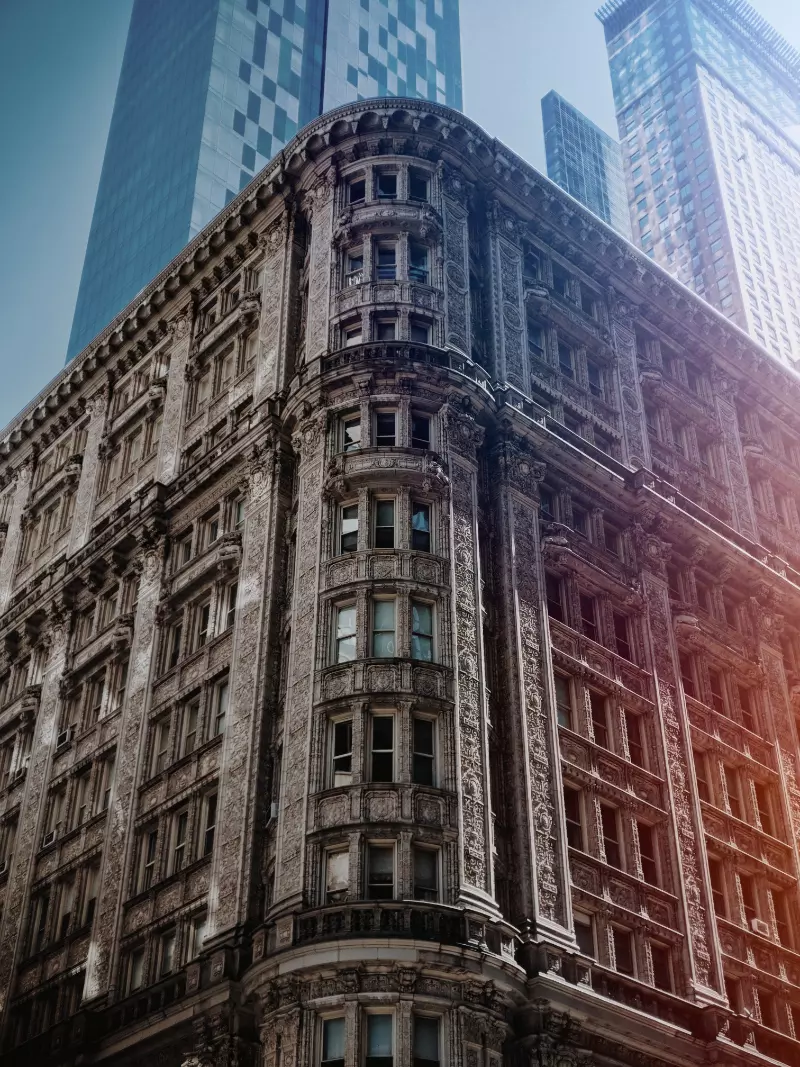
Of the 1,000+ buildings that Wright designed, nearly one-third were begun in the 1950s, when he was most prolific. Like most architects, some of Wright's more daring designs were only completed after his death, such as the churches in Madison and Milwaukee and the Grady Gammage Auditorium of Arizona State University.
Van der Rohe's designs were more industrial and angular in style, using brick, glass and steel, with concrete slabs for flooring and ceilings.
One of his largest projects, designing the entire campus of the Illinois Institute of Technology, was started in 1938 and was not completed until 1955. Van der Rohe then went on to teach at the institute, allowing him to disseminate his ideas to the architects of the future.
It was the Post-war boom that allowed all this innovation in architecture. New synthetic materials, a rapidly growing economy and a welcoming of new ideas led to many radical changes.
Though what's new is rarely ever popular. Many denounced these new designs as "coffee-shop modern" or the "Googie" school. Bright colours, glossy neon-tube lighting and shiny metal surfaces were all the rage in supermarkets, bowling alleys, car washes and any other place you can think of. The golden arches of McDonald's are a prime example of this 1950s style.
Cars From the 1950s
The growing consumerism of the 1950s, coupled with millions of families moving to the suburbs and away from public transport, meant that cars became the number one must-have for any American family.
With innovations in style taking place everywhere else, it was only natural for it to hit the automotive industry as well.
Moving on from being practical workhorses, cars of the 1950s became more beautifully designed than ever before. By the middle of the decade, forty-seven million cars were owned in the U.S. alone, with 8% of families owning at least one.
Almost all of them were American-made, being large and lengthy machines. The classic image of the 50s automobile is the Cadillac, complete with tail fins for added style. And this style was the main aim of manufacturers. Most 1950s cars were very impractical.
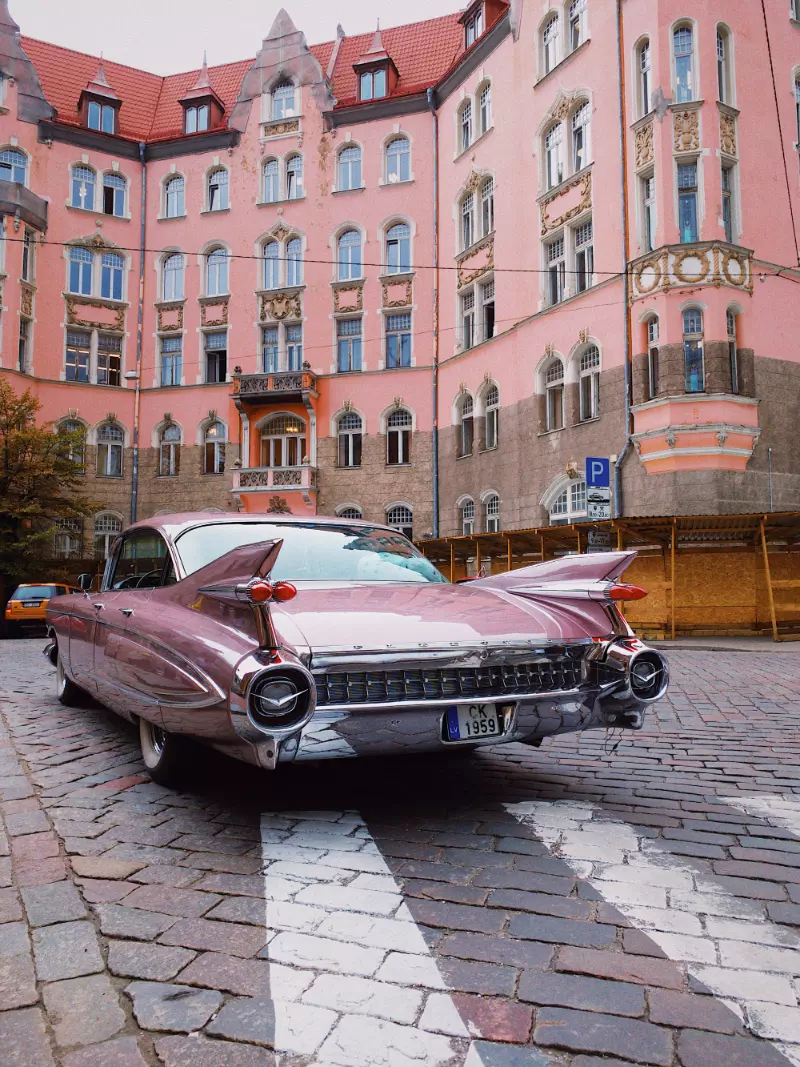
Their size made them incredibly difficult to park, especially in crowded cities. The chrome trims and decorative grills are also very difficult to keep clean or repair if damaged. That's not to mention the horrendous miles per gallon of these gas-guzzling American beasts. But it was all about the looks - and they were definitely some of the most stunning, spacious and powerful cars ever made.
The boom in car ownership led to other interesting changes in 1950s trends, including the growth in drive-in movie theatres. Allowing movie-goers to remain in their beloved cars while watching the latest films was a genius move, ultimately resulting in more than 4,000 drive-ins being scattered throughout the U.S. by 1958.
Original Vintage Movie Posters for Sale
We created this website to provide a vintage movie poster guide. If you have an interest in classic movie posters from the 1950s, 1960s or 1980s, we hope you will learn more about the most popular posters of the period.
Take a sneak peak at some of the posters we have in stock here. However, if you have a film in mind and don't see it here, please get in touch as we'd be happy to locate it for you.
Are you interested in Fifties movie poster collecting? We hope you have gained useful information from this article discussing: the most successful directors in Hollywood. Follow the links below to discover more about collectable movie posters.

